Hye-Bin Shin
Aligning Humans and Robots via Reinforcement Learning from Implicit Human Feedback
Jul 17, 2025Abstract:Conventional reinforcement learning (RL) ap proaches often struggle to learn effective policies under sparse reward conditions, necessitating the manual design of complex, task-specific reward functions. To address this limitation, rein forcement learning from human feedback (RLHF) has emerged as a promising strategy that complements hand-crafted rewards with human-derived evaluation signals. However, most existing RLHF methods depend on explicit feedback mechanisms such as button presses or preference labels, which disrupt the natural interaction process and impose a substantial cognitive load on the user. We propose a novel reinforcement learning from implicit human feedback (RLIHF) framework that utilizes non-invasive electroencephalography (EEG) signals, specifically error-related potentials (ErrPs), to provide continuous, implicit feedback without requiring explicit user intervention. The proposed method adopts a pre-trained decoder to transform raw EEG signals into probabilistic reward components, en abling effective policy learning even in the presence of sparse external rewards. We evaluate our approach in a simulation environment built on the MuJoCo physics engine, using a Kinova Gen2 robotic arm to perform a complex pick-and-place task that requires avoiding obstacles while manipulating target objects. The results show that agents trained with decoded EEG feedback achieve performance comparable to those trained with dense, manually designed rewards. These findings validate the potential of using implicit neural feedback for scalable and human-aligned reinforcement learning in interactive robotics.
Uncertainty-Aware Cross-Modal Knowledge Distillation with Prototype Learning for Multimodal Brain-Computer Interfaces
Jul 17, 2025Abstract:Electroencephalography (EEG) is a fundamental modality for cognitive state monitoring in brain-computer interfaces (BCIs). However, it is highly susceptible to intrinsic signal errors and human-induced labeling errors, which lead to label noise and ultimately degrade model performance. To enhance EEG learning, multimodal knowledge distillation (KD) has been explored to transfer knowledge from visual models with rich representations to EEG-based models. Nevertheless, KD faces two key challenges: modality gap and soft label misalignment. The former arises from the heterogeneous nature of EEG and visual feature spaces, while the latter stems from label inconsistencies that create discrepancies between ground truth labels and distillation targets. This paper addresses semantic uncertainty caused by ambiguous features and weakly defined labels. We propose a novel cross-modal knowledge distillation framework that mitigates both modality and label inconsistencies. It aligns feature semantics through a prototype-based similarity module and introduces a task-specific distillation head to resolve label-induced inconsistency in supervision. Experimental results demonstrate that our approach improves EEG-based emotion regression and classification performance, outperforming both unimodal and multimodal baselines on a public multimodal dataset. These findings highlight the potential of our framework for BCI applications.
EEG-based Multimodal Representation Learning for Emotion Recognition
Oct 29, 2024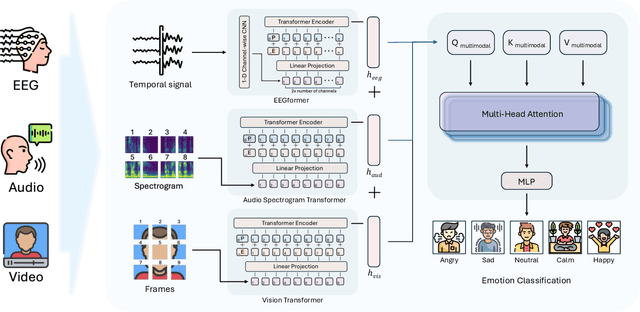
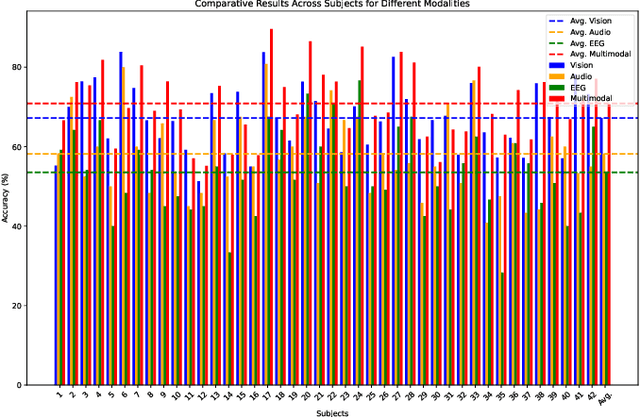
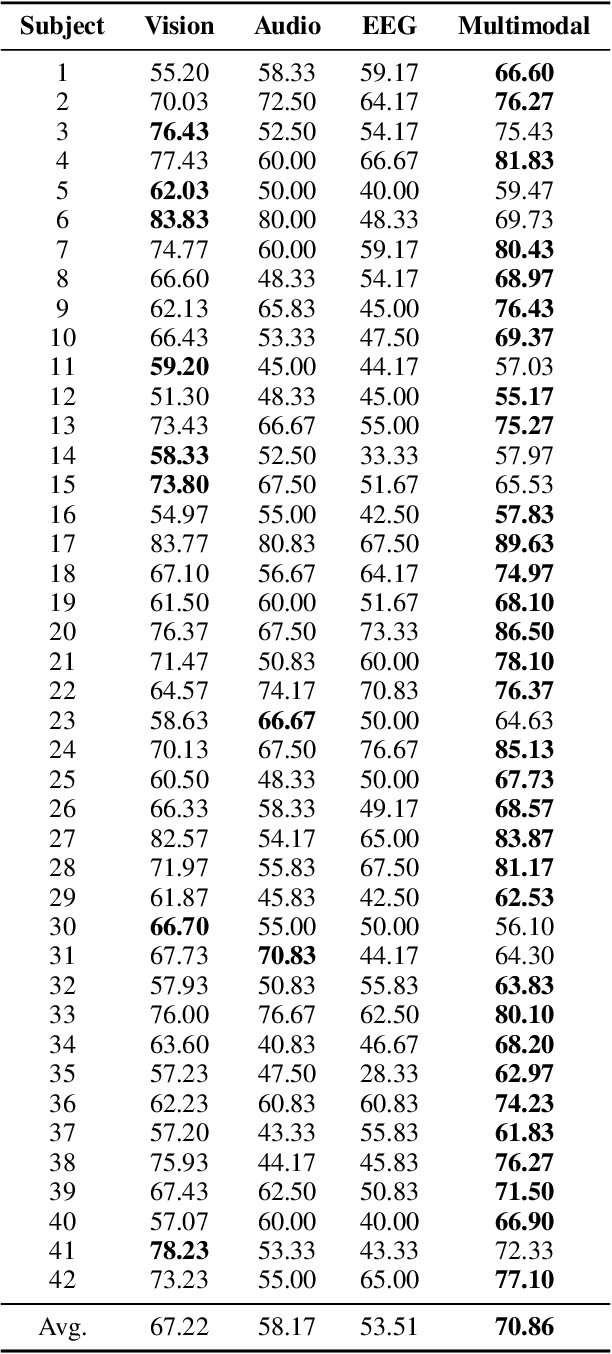
Abstract:Multimodal learning has been a popular area of research, yet integrating electroencephalogram (EEG) data poses unique challenges due to its inherent variability and limited availability. In this paper, we introduce a novel multimodal framework that accommodates not only conventional modalities such as video, images, and audio, but also incorporates EEG data. Our framework is designed to flexibly handle varying input sizes, while dynamically adjusting attention to account for feature importance across modalities. We evaluate our approach on a recently introduced emotion recognition dataset that combines data from three modalities, making it an ideal testbed for multimodal learning. The experimental results provide a benchmark for the dataset and demonstrate the effectiveness of the proposed framework. This work highlights the potential of integrating EEG into multimodal systems, paving the way for more robust and comprehensive applications in emotion recognition and beyond.
Sparse Multitask Learning for Efficient Neural Representation of Motor Imagery and Execution
Dec 10, 2023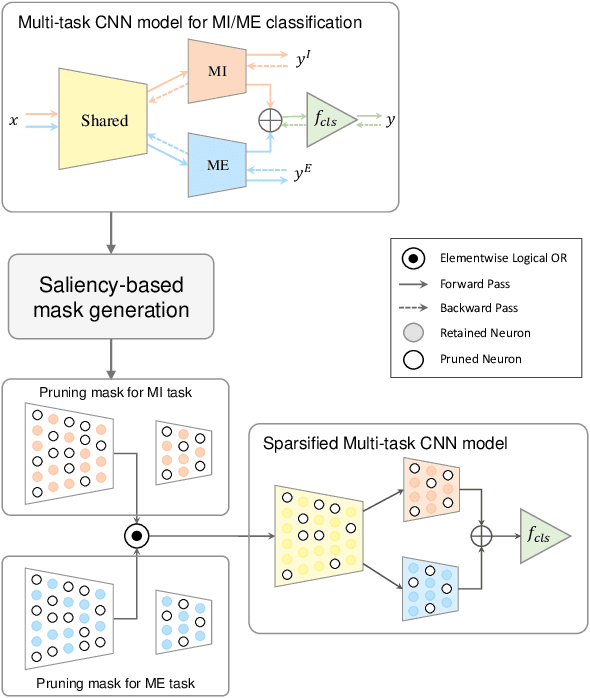
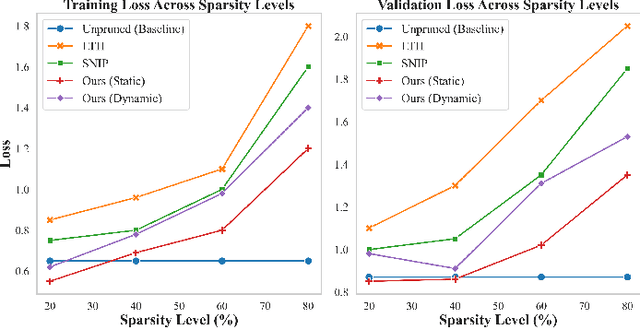
Abstract:In the quest for efficient neural network models for neural data interpretation and user intent classification in brain-computer interfaces (BCIs), learning meaningful sparse representations of the underlying neural subspaces is crucial. The present study introduces a sparse multitask learning framework for motor imagery (MI) and motor execution (ME) tasks, inspired by the natural partitioning of associated neural subspaces observed in the human brain. Given a dual-task CNN model for MI-ME classification, we apply a saliency-based sparsification approach to prune superfluous connections and reinforce those that show high importance in both tasks. Through our approach, we seek to elucidate the distinct and common neural ensembles associated with each task, employing principled sparsification techniques to eliminate redundant connections and boost the fidelity of neural signal decoding. Our results indicate that this tailored sparsity can mitigate the overfitting problem and improve the test performance with small amount of data, suggesting a viable path forward for computationally efficient and robust BCI systems.
Calibration-Free Driver Drowsiness Classification based on Manifold-Level Augmentation
Dec 14, 2022


Abstract:Drowsiness reduces concentration and increases response time, which causes fatal road accidents. Monitoring drivers' drowsiness levels by electroencephalogram (EEG) and taking action may prevent road accidents. EEG signals effectively monitor the driver's mental state as they can monitor brain dynamics. However, calibration is required in advance because EEG signals vary between and within subjects. Because of the inconvenience, calibration has reduced the accessibility of the brain-computer interface (BCI). Developing a generalized classification model is similar to domain generalization, which overcomes the domain shift problem. Especially data augmentation is frequently used. This paper proposes a calibration-free framework for driver drowsiness state classification using manifold-level augmentation. This framework increases the diversity of source domains by utilizing features. We experimented with various augmentation methods to improve the generalization performance. Based on the results of the experiments, we found that deeper models with smaller kernel sizes improved generalizability. In addition, applying an augmentation at the manifold-level resulted in an outstanding improvement. The framework demonstrated the capability for calibration-free BCI.
Recognition of Tactile-related EEG Signals Generated by Self-touch
Dec 14, 2021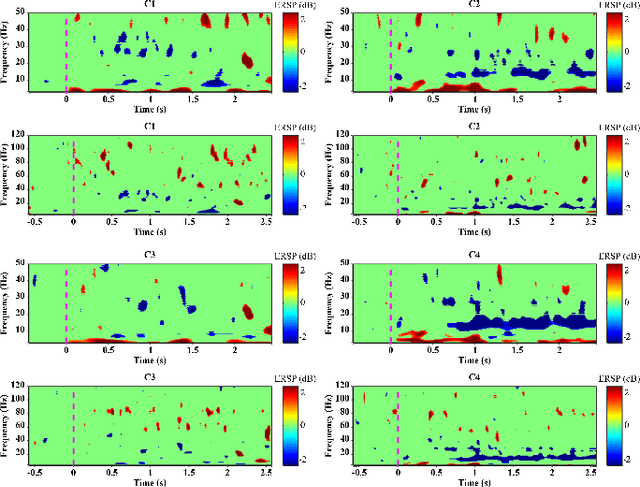
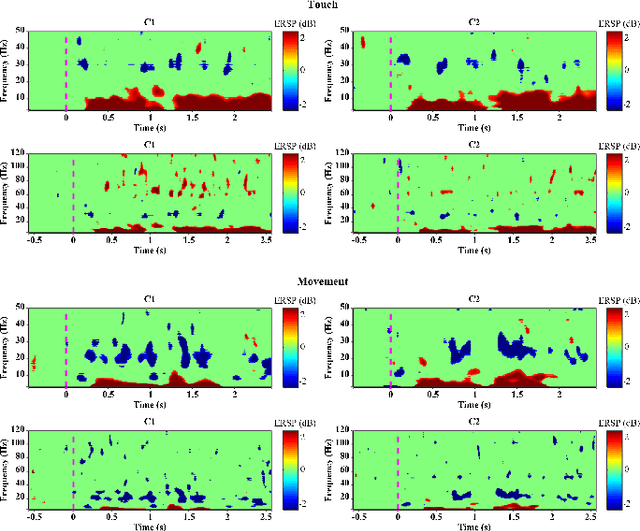
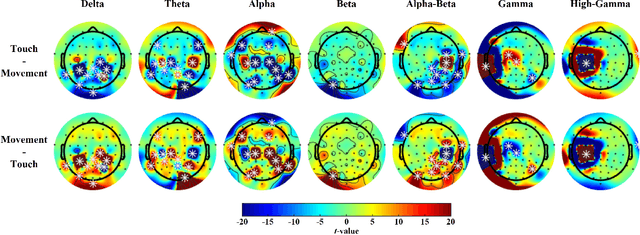
Abstract:Touch is the first sense among human senses. Not only that, but it is also one of the most important senses that are indispensable. However, compared to sight and hearing, it is often neglected. In particular, since humans use the tactile sense of the skin to recognize and manipulate objects, without tactile sensation, it is very difficult to recognize or skillfully manipulate objects. In addition, the importance and interest of haptic technology related to touch are increasing with the development of technologies such as VR and AR in recent years. So far, the focus is only on haptic technology based on mechanical devices. Especially, there are not many studies on tactile sensation in the field of brain-computer interface based on EEG. There have been some studies that measured the surface roughness of artificial structures in relation to EEG-based tactile sensation. However, most studies have used passive contact methods in which the object moves, while the human subject remains still. Additionally, there have been no EEG-based tactile studies of active skin touch. In reality, we directly move our hands to feel the sense of touch. Therefore, as a preliminary study for our future research, we collected EEG signals for tactile sensation upon skin touch based on active touch and compared and analyzed differences in brain changes during touch and movement tasks. Through time-frequency analysis and statistical analysis, significant differences in power changes in alpha, beta, gamma, and high-gamma regions were observed. In addition, major spatial differences were observed in the sensory-motor region of the brain.
 Add to Chrome
Add to Chrome Add to Firefox
Add to Firefox Add to Edge
Add to Edge